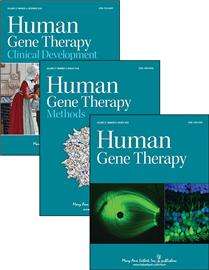Credit: Mary Ann Liebert, Inc., publishers
A new study examined 42 combinations of promoters and enhancers for human factor VIII (hFVIII) gene expression to identify the optimal adeno-associated virus (AAV)-based gene therapy delivery vector constructs to take forward into development. Evaluation of the different combinations in mice that lack factor VIII demonstrated the significant and differing effects the vector components had on liver-specific expression of the hFVIII transgene, as reported in Human Gene Therapy.
James M. Wilson, MD, PhD, Director of the Gene Therapy Program, Department of Medicine, University of Pennsylvania (Philadelphia, PA) and Editor, Human Gene Therapy Clinical Development, and coauthors from the University of Pennsylvania Department of Medicine and School of Nursing, and Dimension Therapeutics (Cambridge, MA), developed and compared the different AAV vectors to overcome the challenge of delivering the relatively large hFVIII gene and to achieve therapeutic levels of factor VIII gene expression.
In the article entitled "Characterization of AAV-Mediated Human Factor VIII Gene Therapy in Hemophilia A Mice," the researchers also compared the levels of antibody generated against the various AAV transgene delivery vectors.
"Dr. Wilson's group and their colleagues at Dimension Therapeutics continue to improve the design of AAV vectors designed to treat the more common form of hemophilia, hemophilia A," says Editor-in-Chief Terence R. Flotte, MD, Celia and Isaac Haidak Professor of Medical Education and Dean, Provost, and Executive Deputy Chancellor, University of Massachusetts Medical School, Worcester, MA. "These design improvements are crucial as the practical application of gene therapy for hemophilia progresses."
More information: Jenny A. Greig et al, Characterization of Adeno-Associated Viral Vector-Mediated Human Factor VIII Gene Therapy in Hemophilia A Mice, Human Gene Therapy (2017). DOI: 10.1089/hum.2016.128
Journal information: Human Gene Therapy
Provided by Mary Ann Liebert, Inc























